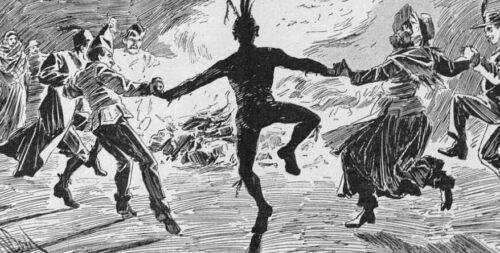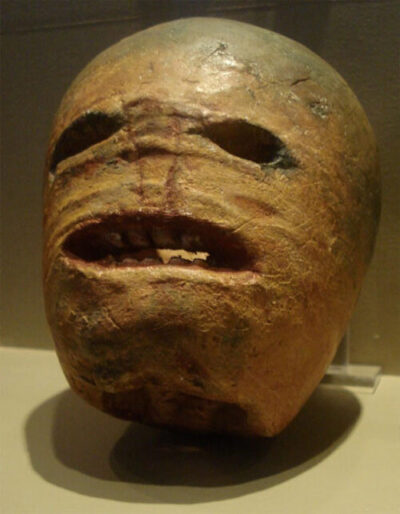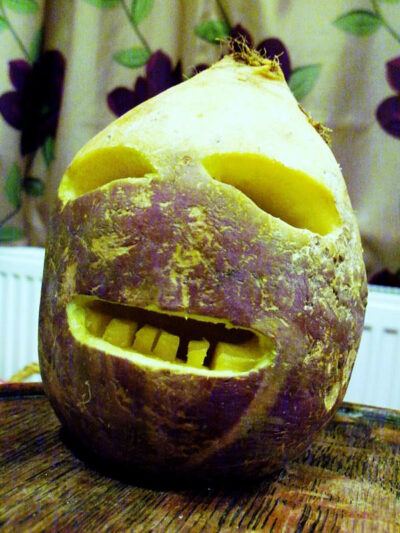Canada may have entered a technical recession, early StatCan data show
, The Canadian Press
The Canadian economy may have entered a technical recession, according to the preliminary gross domestic product estimate from Statistics Canada.
The federal agency released its August GDP report on Tuesday, which shows the Canadian economy remained flat in the month, while a preliminary estimate suggests it shrank in the third quarter.
The report says higher interest rates, inflation, forest fires and drought conditions continued to weigh on the economy.
August marked the second consecutive month where growth remained flat, and advance data suggests the economy continued that trend in September.
For the third quarter, Statistics Canada's preliminary estimate suggested the economy shrank at an annualized rate of 0.1 per cent, which would follow a contraction in the second quarter.
A technical recession is defined as two consecutive quarters of negative growth, but economists generally look for broader-based weakness to qualify a downturn as a recession.
"The declines are still very small," said Nathan Janzen, assistant chief economist at RBC.
The report said eight out of 20 industries grew in August, while growth in services-producing sectors was offset by goods-producing sectors.
Among the industries that experienced growth are wholesale trade and mining, quarrying, oil and gas extraction.
Industries such as agriculture and forestry, manufacturing, retail and accommodation and food services shrank.
The Bank of Canada opted to hold its key interest rate steady at five per cent at its last two decision meetings. Janzen said Tuesday's release solidifies this decision.
"This makes it more likely that they won't hike interest rates again," he said.
High interest rates are expected to continue dampening growth in the economy, particularly as more households renew their mortgages at higher rates.
A recent forecast from the Bank of Canada suggests economic growth will remain weak for the rest of the year, and into 2024.
The pullback in spending caused by higher borrowing costs is supposed to help cool high inflation, which was sitting at 3.8 per cent in September.
The Bank of Canada expects annual inflation will return to the two per cent target in 2025.
This report by The Canadian Press was first published Oct. 31, 2023.
'Very weak': economists react to GDP figures
, BNN Bloomberg
The Canadian economy came to a standstill in August as overall demand for goods and services weakened, according to Statistics Canada data released Tuesday – and economists predict the slowdown will continue in the months ahead.
Gross domestic product (GDP) came in flat in the month of August and saw 0.9 per cent growth year-over-year, according to data released by Statistics Canada on Tuesday. Flash estimates for the country’s third-quarter GDP show a contraction of 0.1 per cent.
“There’s a lack of business confidence. It’s very weak. It’s at recession levels and consumer confidence keeps coming down as well, and there’s a real risk here that this could unravel into something deeper,” Pedro Antunes, chief economist at the Conference Board of Canada, told BNN Bloomberg in an interview on Tuesday.
While Antunes isn’t calling for a recession, he does anticipate flat economic activity to continue from now until 2024.
“We’re starting to see the full impacts of this very restrictive monetary policy,” Antunes said.
Accommodation and food services declined 1.8 per cent in August, while retail trade contracted 0.7 per cent, continuing the downward trend that started at the beginning of 2023, the data showed.
In terms of what’s driving the economic weakness, Antunes pointed to a weakened consumer with spillover effects for business profitability, as well as a general slowdown in global growth. Despite those factors, Canada's labour market is still proving to be fairly resilient, he noted.
“We’re still calling for a soft landing but there are some risks there,” he said.
FIRMS 'HOARDING WORKERS'
Typically there is a lag between economic data and job cuts, Jean-François Perrault, senior vice-president and chief economist at Scotiabank, told BNN Bloomberg in an interview on Tuesday.
“We are expecting a modest tick up of unemployment, a half a percentage point or so in the next few quarters, which isn’t really big deal by historical standards, but of course is required if you’re trying to slow the economy,” he said.
Economists typically expect more job losses during an economic slowdown, but Perrault said recent labour shortages may explain the current pattern.
“Firms spent a tremendous amount of energy attracting and retaining workers over the last couple of years, and we know that that’s probably leading them to hoarding workers,” he said.
“Once workers are gone in this economy, they’re going to be very difficult to get back,” Perrault added.
FORECASTED THIRD-QUARTER CONTRACTION
A preliminary reading of Canada's third-quarter growth revealed an economic contraction, which is in line with what an RBC economist had forecasted.
“Details were arguably softer than the headline growth number suggested, with consumer-sensitive sectors like retail sales and hospitality services looking softer (despite surging population growth) and the manufacturing sector pulling back for a third straight month," Nathan Janzen, assistant chief economist at Royal Bank of Canada, wrote in a note on Tuesday.
WHAT DOES IT MEAN FOR INFLATION?
The weakening of the Canadian economy is likely to ease any inflationary pressures ahead, despite the Bank of Canada’s concerns of inflation running above its two per cent target, he added.
"We don't expect additional interest rate hikes from the (Bank of Canada) as long as that continues,” Janzen wrote.
Desjardins economists agreed that inflation would likely ease as a result of the economic climate, allowing the Bank of Canada to stay on the sidelines.
“We think inflation should come in weaker that the (Bank of Canada’s) upwardly revised forecast, allowing it to remain on hold for the foreseeable future,” Randall Bartlett, Desjardins senior director of Canadian Economics, wrote in a note on Tuesday.
“We remain of the view that the next move by the Bank will be a cut around the middle of 2024,” he said.
'The market is wrong' on rate cut timeline: Ed
Devlin
, BNN Bloomberg
While the central bank has not indicated when it will start cutting rates, the street is projecting rate cuts will begin by late 2024. Devlin Capital founder Ed Devlin told BNN Bloomberg that he’s betting against that sentiment.
“The market’s not always right. I think the market is wrong,” he said.
Devlin said he believes the Bank of Canada will cut rates in the not-so-distant future as he says the monetary policy in both Canada and the U.S. is too tight.
“(Bank of Canada Governor Tiff Macklem) and (U.S. Federal Reserve Chair Jerome Powell) do not want to go down in history as the folks who let the inflation genie out of the bottle … (but) they already are overly restrictive,” he said.
Economist David Rosenberg, founder and president of Rosenberg Research, told BNN Bloomberg that he agrees with Devlin’s assessment.
“They’ve already put the inflation genie back in the bottle,” he said Thursday.
Rosenberg pointed to Canada’s fractionally negative GDP read in the second quarter and signs of no momentum in the third quarter as proof that “a recession has already begun.”
“When you strip out all the nonsense, such as mortgage interest rates in the consumer price index, inflation in Canada is running right at target,” he explained.
“(The Bank of Canada) actually should be thinking about cutting rates, but it’s hubris that’s preventing them from doing that,” he added.
In this economic environment, Rosenberg believes the Bank of Canada will need to act fast.
“Rates are going to be coming down much more quickly and forcefully than the markets (have) priced in right now,” he warned.
Canada facing 'stagflation' risk: former Bank
of Canada official
, BNN Bloomberg
As the Bank of Canada hints that interest rates may stay at five per cent for some time, a former deputy governor at the central bank says the country’s economy now risks "stagflation."
On Wednesday, the Bank of Canada held interest rates at five per cent. It kept the door open to further hikes in the future, while reiterating that “supply and demand in the economy are now approaching balance.”
Paul Beaudry, deputy governor at the Bank of Canada from 2019 until July of this year, said Canada should be concerned about stagflation, which occurs when an economy faces slow growth, high unemployment and high prices.
“I think we're in that risk right now,” he said.
“Growth is very slow right now. If you look at it per capita, it's actually declining. The actual growth of the economy per capita is already negative and we still have inflation well above the Bank of Canada's target. That’s, in some sense, a sign of that stagflation.”
Beaudry said the hope is that an economic slowdown will be enough to bring prices back down, but stagflation remains a risk.
“If … inflation doesn't come back down because the economy has gotten used to an inflation rate more around three and a half, or four per cent, then that's going to be a real difficulty and a real challenge going forward,” Beaudry said.
The Bank of Canada downgraded its growth outlook the 2023 and 2024 in its Monetary Policy Report on Wednesday, with growth expected to reach 1.2 per cent and 0.9 per cent in those respective years.
Beaudry said mortgage renewals, which could see some homeowners suddenly paying thousands of dollars more when it comes time to renew, will have a significant impact on growth in Canada.
“More and more people start renewing and are renewing that rates that are much higher than when they first took out that mortgage,” he said.
“That’s … a long shadow on the Canadian economy. The Bank of Canada has taken that into account.”
BANK OF CANADA ‘NOT THINKING ABOUT RATE CUTS’
Beaudry also warned against high hopes of a rate cut in the near future.
“Whatever the interpretation you take from yesterday's decision, interest rates are not coming down for a while,” he said, pointing to the Bank of Canada’s forecasts for inflation staying above 3.5 per cent into next year and starting to come down in 2025.
“That's not an environment where it's suggesting the Bank of Canada is thinking about rate cuts at this point.”











